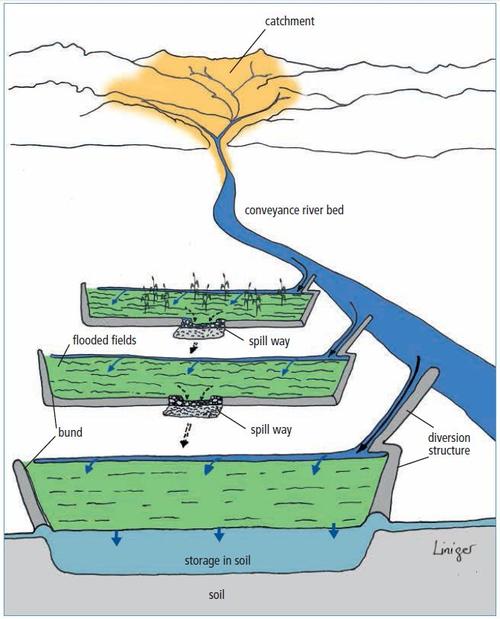Spate irrigation is an ancient form of WH. It is a method of managing unpredictable and potentially destructive flash floods for crop and livestock production. Floodwater from mountain catchments is diverted from ephemeral riverbeds (wadis/koris) and spread over large areas for irrigating crops in lowland plains. The technology makes use of seasonal floods of short durations. In the application area, where water is concentrated, water soaks into the soil and provides residual soil moisture for crop growth, allowing for up to three crop harvests per year if floods occur several times. Planting is carried out after the first floodwater has subsided.
Spates can also fill ponds for use by humans and livestock. Spate irrigation practices can consist either of temporary or permanent headwork (at the diversion structure in the riverbed). While the former includes soil bunds, small/ sized gabion structures and diversion canals, the latter comprises concrete diversion weirs, bunds and siphons. Spate systems are risk-prone by nature just as they are opportunistic. The uncertainty comes from the unpredictable nature of the floods as well as frequent changes to the riverbeds from which water is diverted. People whose livelihood and food security depends on spate flows often belong to the poorest segment of the rural population. Substantial local knowledge has developed in organizing spate systems and managing both the floodwater and the heavy sediment loads that go along with it.
(Mekdaschi & Liniger 2013)
